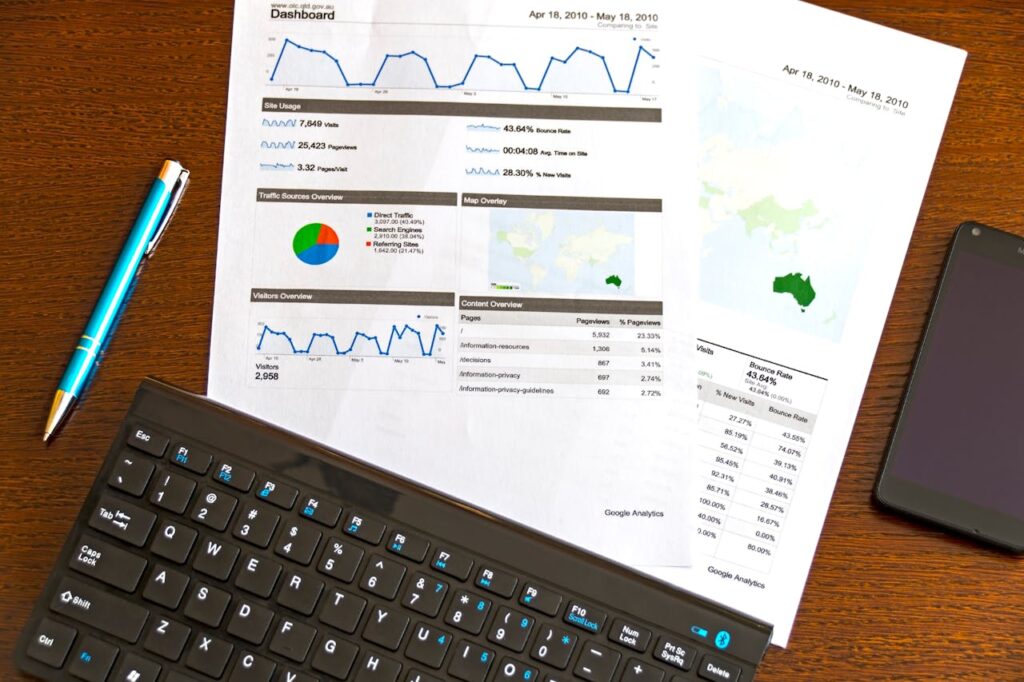Creating effective monthly PR reports requires careful planning, strategic metric selection, and efficient processes. PR professionals must balance providing comprehensive data with clear, actionable insights that demonstrate value to stakeholders. According to recent studies by Muck Rack, 82% of PR teams now use data-driven reporting to show campaign impact, making structured templates and automation essential for success. Monthly PR reporting has shifted from simple media mention counts to sophisticated analysis incorporating multiple channels, audience engagement metrics, and business outcomes. This guide will walk through everything you need to create impactful monthly PR reports, from selecting the right metrics to implementing time-saving automation.
5WPR Insights
Essential Components of Monthly PR Reports
A well-structured monthly PR report starts with clear organization and purposeful sections. The foundation includes an executive summary highlighting key wins, detailed performance metrics, and strategic recommendations. According to Prezly’s research, 73% of stakeholders prefer reports that begin with high-level insights before diving into specifics.
Start each report with a brief overview of the month’s activities and notable achievements. This section should take no more than one page and focus on the most significant outcomes. Include 2-3 key statistics that demonstrate progress toward primary objectives.
Following the executive summary, break down performance by channel and campaign. Create separate sections for:
- Media coverage analysis
- Social media performance
- Website traffic from PR activities
- Campaign-specific metrics
- Audience engagement data
- Share of voice comparison
- Crisis management updates (if applicable)
Each section should include both raw data and contextual analysis explaining what the numbers mean for business objectives. Use month-over-month and year-over-year comparisons to show trends and progress.
Key Metrics for Measuring PR Success
Selecting the right metrics forms the backbone of effective PR reporting. According to Muck Rack’s analysis, focusing on 8-10 core KPIs provides the best balance between comprehensive coverage and clarity.
Media Coverage Metrics
Track both quantity and quality of media placements:
- Total media mentions
- Tier 1 vs. Tier 2 coverage breakdown
- Publication domain authority
- Reach and readership numbers
- Message pull-through rate
- Spokesperson quotes and appearances
- Sentiment analysis (positive/neutral/negative)
Digital Performance Indicators
Monitor online impact through:
- Website traffic from PR activities
- Social media engagement rates
- Share of voice vs. competitors
- Backlink quality and quantity
- Domain authority changes
- Search ranking improvements
- Online mention sentiment
Business Impact Metrics
Connect PR efforts to business outcomes:
- Lead generation from PR activities
- Sales pipeline influence
- Brand awareness metrics
- Customer sentiment changes
- Market share impact
- Employee engagement rates
- Stakeholder feedback scores
Data Visualization and Presentation
Visual presentation significantly impacts how stakeholders absorb information. Research from Visme shows that reports using data visualization see 40% higher engagement than text-only formats.
Creating Effective Charts and Graphs
Select visualization types based on data characteristics:
- Line graphs for trends over time
- Bar charts for comparisons
- Pie charts for composition
- Heat maps for geographic data
- Scatter plots for correlations
Keep designs clean and consistent, using brand colors and clear labels. Include brief annotations highlighting key insights next to each visual.
Report Layout Best Practices
Structure your report for maximum impact:
- Single-page executive dashboard
- Channel-specific performance sections
- Campaign deep dives
- Future recommendations
- Appendix with detailed data
Use consistent formatting throughout, with clear headers and subheaders guiding readers through the narrative.
Automation Strategies for PR Reporting
Implementing automation can reduce report creation time by up to 60%, according to Releasd’s research. Modern PR tools offer various automation options for data collection and report generation.
Data Collection Automation
Set up automated tracking for:
- Media monitoring alerts
- Social media metrics
- Website analytics
- Email campaign performance
- Competitor mentions
- Industry news
Configure tools to pull data automatically into centralized dashboards for easy access.
Report Generation Tools
Popular automation platforms include:
- Muck Rack for media monitoring
- Prezly for coverage tracking
- Releasd for report templates
- Google Data Studio for analytics
- Hootsuite for social metrics
These tools can automatically generate reports on schedule and distribute them to stakeholders.
Integration Tips
Connect your various PR tools through APIs and automated workflows:
- Set up regular data syncs between platforms
- Create templated reports that auto-populate
- Schedule automated report distribution
- Configure custom alerts for significant changes
- Build stakeholder-specific dashboard views
Customizing Reports for Different Stakeholders
Different audiences require different levels of detail and focus areas. Tailor reports based on stakeholder needs while maintaining consistency in core metrics.
Executive Leadership Reports
Focus on:
- High-level business impact
- ROI metrics
- Competitive positioning
- Strategic implications
- Future recommendations
Keep these reports brief and action-oriented.
Marketing Team Reports
Include:
- Detailed campaign performance
- Channel-specific metrics
- Content effectiveness
- Audience insights
- Integration opportunities
Provide more tactical details and day-to-day learnings.
Client Reports
Emphasize:
- Goal progress
- Value delivered
- Activity breakdown
- Success stories
- Next steps
Maintain regular cadence and consistent format.
Conclusion
Creating effective monthly PR reports requires a balanced approach to metric selection, presentation, and automation. Focus on metrics that matter to your stakeholders, present data clearly with strong visualizations, and leverage automation tools to streamline the process. Start by implementing a basic template incorporating the core components discussed above, then iterate based on feedback and needs.
Next steps for implementation:
- Audit current reporting processes and identify gaps
- Select and set up appropriate automation tools
- Create standardized templates for different stakeholders
- Establish regular reporting schedules
- Gather feedback and refine approach
Remember that effective PR reporting is an ongoing process of refinement and improvement. Regular reviews and updates ensure your reports continue to provide value and drive strategic decision-making.

More PR Insights
Inclusive Workplace Communication: Strategies To Support Neurodiverse Teams
PR Lessons From The Most-Shared Linkedin Posts
How To Manage Rumors About Your Brand